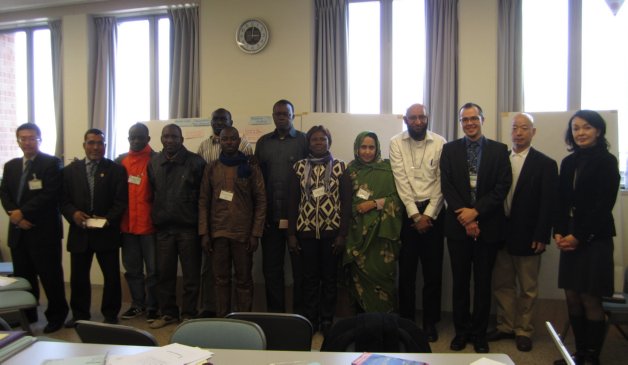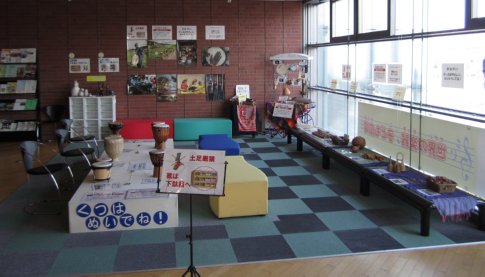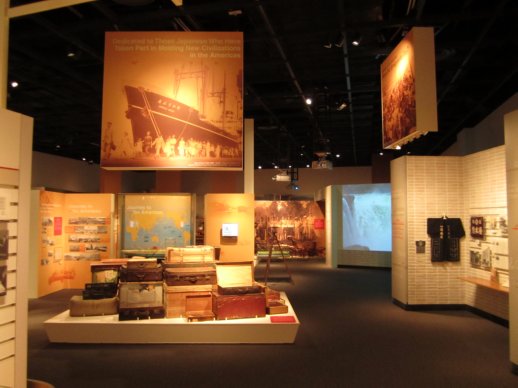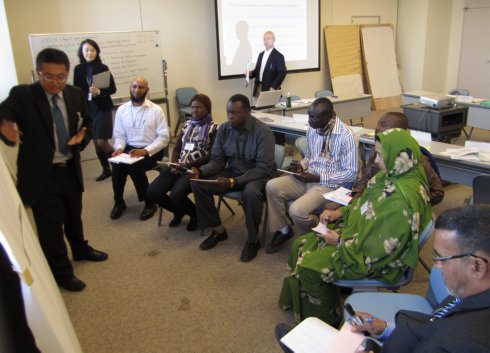Main content starts here.
JICA Yokohama
Last updated date:2025/11/25
JICA Yokohama
Yokohama International Center

If you have been to the Minato Mirai district in the Port of Yokohama, you might have wondered what was that building across from the World Porters shopping mall and Cosmo World ferris wheel. That, my dear friends, is JICA Yokohama and so happens to be what I’m introducing today.
But first, what is JICA?
JICA stands for Japan International Cooperation Agency(外部サイト) and helps make the world go round, or rounder if you will. It strives to reduce poverty through equitable growth, improve governance and achieve human security among other goals, especially in, but not limited to, developing countries. It does so through strategies such as promoting development partnerships and enhancing research and the sharing of knowledge and technique between countries.
But it doesn’t merely provide solutions. As the saying goes “Give a man a fish, and you feed him for a day. Teach a man to fish, and you feed him for life.” JICA encourages all people to recognize the development issues they themselves face, participate in addressing them and bring forward a solution; providing support throughout the process.
Although JICA’s support also includes special activities such as disaster relief, its inclusive and dynamic development vision mainly takes one of three forms:
1- Grants
The grants provided by JICA are funds used for improving the basic infrastructure of countries which have low income levels. JICA supervises the use of these grants to make sure they don’t serve private construction work, but essential areas such as schools, hospitals, water-supply facilities, etc. Grants are for the sake of the public!
2- Loans
Loans are provided to developing countries above a certain income level to finance development efforts. They are low-interest and tend to go on the longer term. They’re not necessarily aimed at construction of infrastructure, and extend to other projects that require substantial funding. Loans usually follow a formal request by the contracting country.
3- Technical Cooperation
Whereas grants and loans are understandings between governments, technical cooperation bonds humans to humans. It is aimed at filling a lack in human capacity. Money is necessary to cover the fees of projects, but technical cooperation strengthens the receiving country by teaching its people HOW to realize those projects.
Technical cooperation is where Yokohama falls into this scheme. JICA has 17 15branch offices in Japan, Yokohama International Center being one of them. It welcomes about 800 trainees to its facilities every year and specializes in the fields of the environment, port management, vocational training, fisheries and water supply, among others. As a matter of fact, JICA Yokohama and the City of Yokohama have signed a comprehensive partnership agreement to better serve international cooperation in developing countries and further develop Yokohama as a city open to the world.
But JICA Yokohama’s aim is even larger! It is open to everyone in various ways.

- The 1st and 2nd floors are open to the public (free admission). There is a library; the JICA Plaza Yokohama rest area with a permanent exhibit of situation of developing countries and music instruments from around the world, and the Japanese Overseas Migration Museum—a museum on the history of Japanese immigration. There is also a cafeteria called the Port Terrace Café on the 3rd floor from where can be admired the beaufitul Red Brick Warehouse while enjoying truly international meals. Indeed, the kitchen serves food to suit the taste and restrictions of the cultures present. JICA also holds different events opened to the public throughout the year.

- Programs for school children on excursions. The programs vary in length (from 10 minutes to a whole day) and in content, depending on the needs of the group.
- Programs for teachers. Researchers from JICA Yokohama can perform school visits upon request. Inversely, Japanese teachers also have the opportunity to participate in various training programs such as training overseas.

On the day of my visit to Yokohama International Center, various region-focused training programs were in progress. I saw Brazilians of Japanese descent learning how to teach Japanese in their country and Vietnamese searchers brainstorming solutions to unique problems. As French is my native language, I also stayed a little longer to attend “Sustainable Development of Fishing Communities for French-Speaking Central and West African Countries” which was appropriately conducted in French.
Page ID:414-772-517

